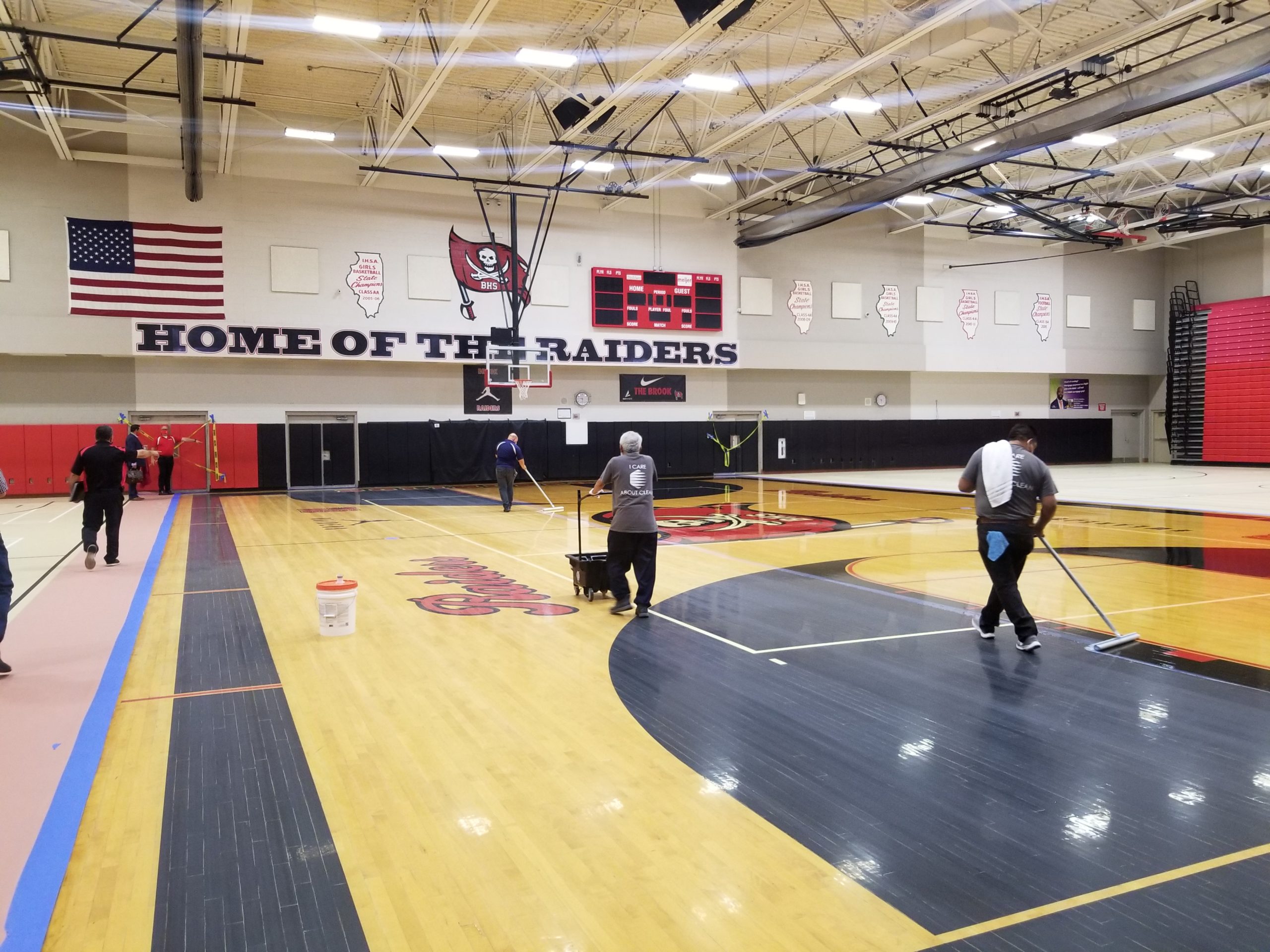There’s only one planet Earth, so organizations have a responsibility to do their part to improve public health while reducing negative effects on the environment. Commercial facilities are increasingly adopting sustainability practices, including more responsible cleaning. There are several benefits that come with green cleaning that all meet one primary goal: having a healthier environment. Green cleaning goes the extra mile, using effective, safe and sustainable solutions.
Lasting Benefits of Responsible Cleaning
Responsible cleaning can offer benefits for:
People
Traditional products may be high in toxic irritants, dangerous compounds or volatile organic compounds (VOCs), which can remain in environments long after use. In fact, at least 95% of chemicals used in fragrances are synthetic compounds that come from petroleum. Petroleum-based chemicals have been known to alter hormones and cause serious medical issues like cancer, neurological disorders, weakened immune systems, learning disabilities, allergies, infertility and more.
Using sustainable cleaning chemicals can reduce health risks and enhance indoor air quality (IAQ). This reduces the adverse effects that poor IAQ has on people, especially those with asthma and allergies. Good IAQ also supports better productivity and performance by reducing health issues that can cause absenteeism and presenteeism.
The planet
U.S. commercial buildings are responsible for consuming 17% of water, 33% of energy, 40% of raw materials and 71% of electricity, indirectly or directly producing 40% of landfill waste and 33% of carbon dioxide emissions. Green cleaning programs carefully consider the amount of waste being produced and sent to landfills. This results in less waste polluting waterways and habitats. Facility managers can look for manufacturers that offer eco-friendly products that will help reduce the impact that cleaning has on the planet.
Brand reputation
Green cleaning improves the perception of the brand. Organizations that have a clear commitment to the environment can improve brand reputation and customer retention, thereby driving greater profits. It turns out that consumers are willing to pay more for products and services coming from companies that are dedicated to social responsibility. Adopting sustainability policies and practices, including green cleaning, also supports employee recruitment and retention, thereby reducing operating costs.
How to Implement Sustainability in Commercial Cleaning
There are numerous ways that commercial facilities can make cleaning more environmentally friendly, including:
Focusing on water conservation
Cleaning requires large volumes of water. Thus, facility managers should carefully assess their equipment. Self-contained scrubbers are capable of effectively cleaning hard floors without multiple buckets of water, and clean up to 70% faster than conventional wet mopping and 30% faster than conventional auto scrubbing. Another simple way to save water is to use dilution stations to make precisely dosed amounts of cleaning chemical with the right amount of water.
Additionally, floor care machines using ec-H20 technology, which converts water into an effective cleaning solution, can help facilities reduce water usage and improve safety. Compared to traditional floor cleaning chemicals, the solution produced through ec-H20 technology removes soils without leaving a chemical residue and scrubbers equipped with this technology also use less water.
Adopting electrochemically activated solutions
More facilities are replacing traditional toxic cleaning products with electrochemically activated solutions (ECAS). These are generated on site using three safe ingredients: water, salt and electricity. ECAS do not irritate the eyes or skin and support better IAQ, as they do not contain added fragrances, dyes or VOCs. This makes them a better solution for everyday use. Adopting ECAS demonstrates that cleaning professionals’ wellbeing and the environment matter.
Reducing waste generation
Investing in high-quality cleaning tools and supplies means they won’t have to be replaced as frequently. This helps cleaning programs generate less waste. For example, microfiber cloths remove fine particles, bacteria, microbes and soils on surfaces. Moving away from single-use solutions like disinfectant wipes in favor of reusable options like microfiber is more environmentally friendly.
ECAS also support waste reduction efforts, as facilities can eliminate chemical shipments and frequent disposal of plastic bottles that contribute to carbon dioxide emissions and additional waste to landfills. Lastly, selecting reliable equipment and properly maintaining it can reduce unnecessary and frequent replacements that create waste.
The “Green for Clean” Effect
The purpose of sustainable cleaning is to create a healthier environment for today and future generations. By eliminating harsh chemicals, commercial facilities support the planet and the health and safety of building occupants and visitors. To become more environmentally friendly, facility managers can look into new ways to reduce waste and innovative technologies that positively impact the organization’s footprint as well as brand reputation.
At GSF USA, we care about clean and making commercial cleaning programs more sustainable. Contact our offices here and follow us on LinkedIn and Facebook for the latest updates.









